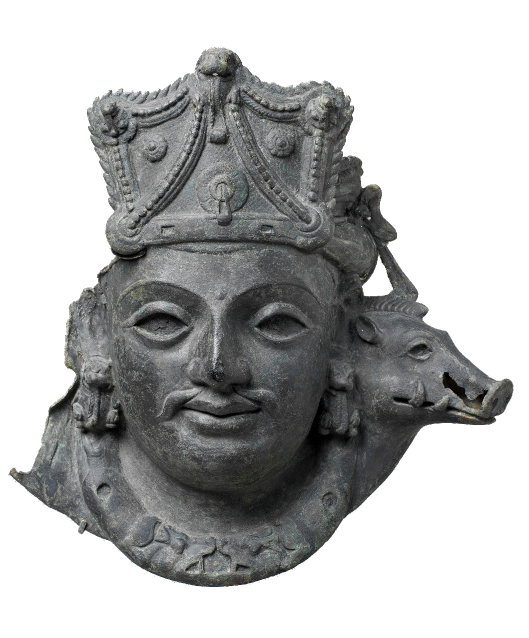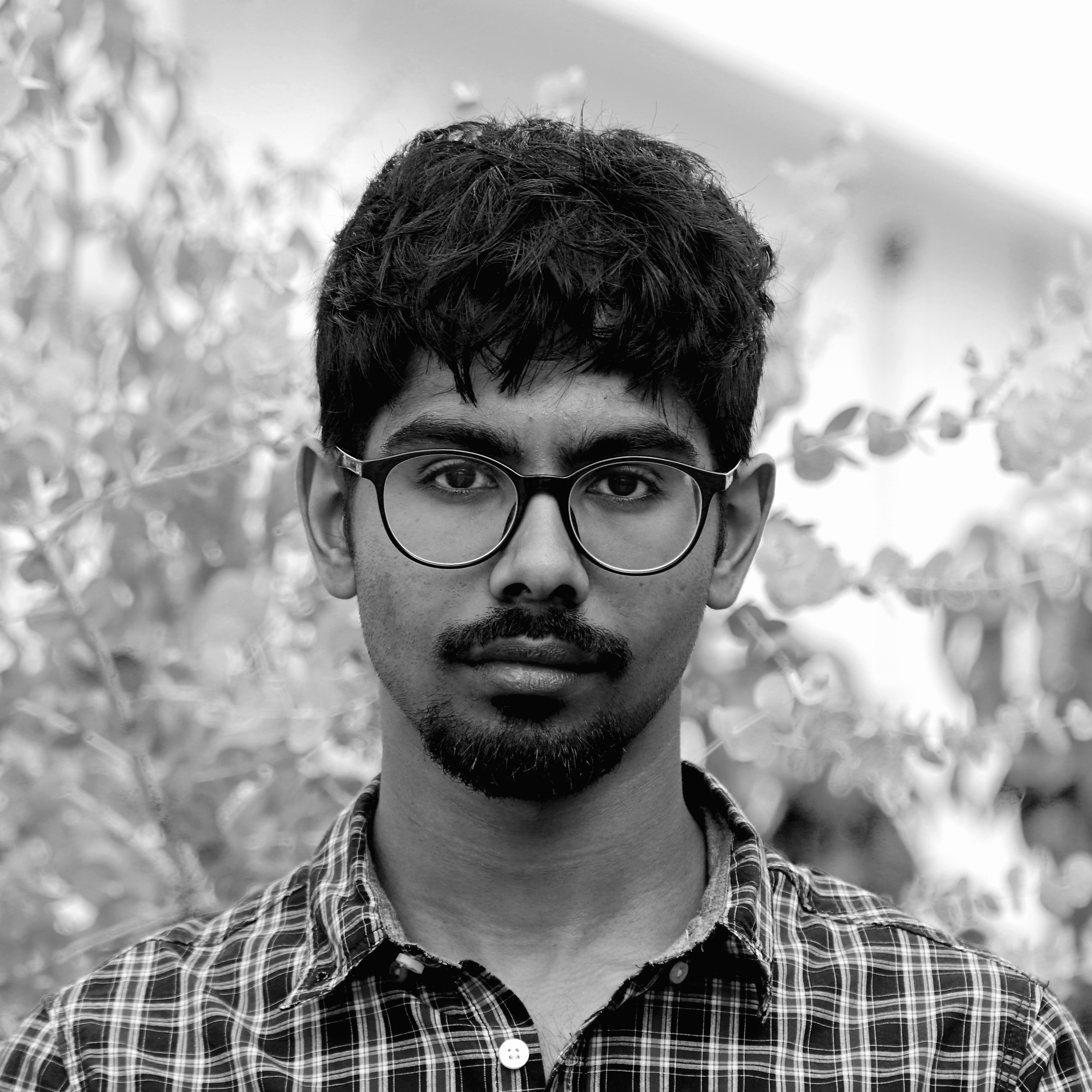PERSPECTIVES
Clothwork Opacities: An Interview with Artist Bhasha Chakrabarti
Some artists use experimental materials and unusual tools, creating experiences both rarefied and unprecedented. Others begin with simpler things — with everyday objects; for them art’s potential resides not in its spectacle, but in its ability to rework how society engages with the mundane and the ordinary.
Bhasha Chakrabarti is of the latter camp. Her practice, roving between quilting, painting, and installation, is prompted by the presence of fabric in all our lives. How do cloth forms integrate into our worlds, as objects of both utility and narrative history?
Working between India and the United States, Chakrabarti is concerned with the politics and poetics of textile. Her deeply researched method traces how specific fabrics are made and how they travel; why they are sometimes bartered and otherwise sold; how cloth comes to be loved and lived in, gendered and classed, noticed and ignored.
Integral to Chakrabarti’s artistic interventions is the link between textiles and our bodies. It is, after all, on the surface of fabric — like extensions of the flesh — that we become most materially revealed. The aspirations, affections, and insecurities of minoritised peoples, especially, are tied to the cloth that interplays with their identities.
Yet, across her kanthas and canvases, her quilts and tapestries, the artist never shies from the grief that fabric wreaks. In this work, all desire for cloth must grapple with the peculiar viciousness of its colonial-capitalist production. Such is Chakrabarti’s empathic, world-spanning vision. She is a maker committed to the cloth of her dreams but willing, always, to confront the weft of its bitter history.
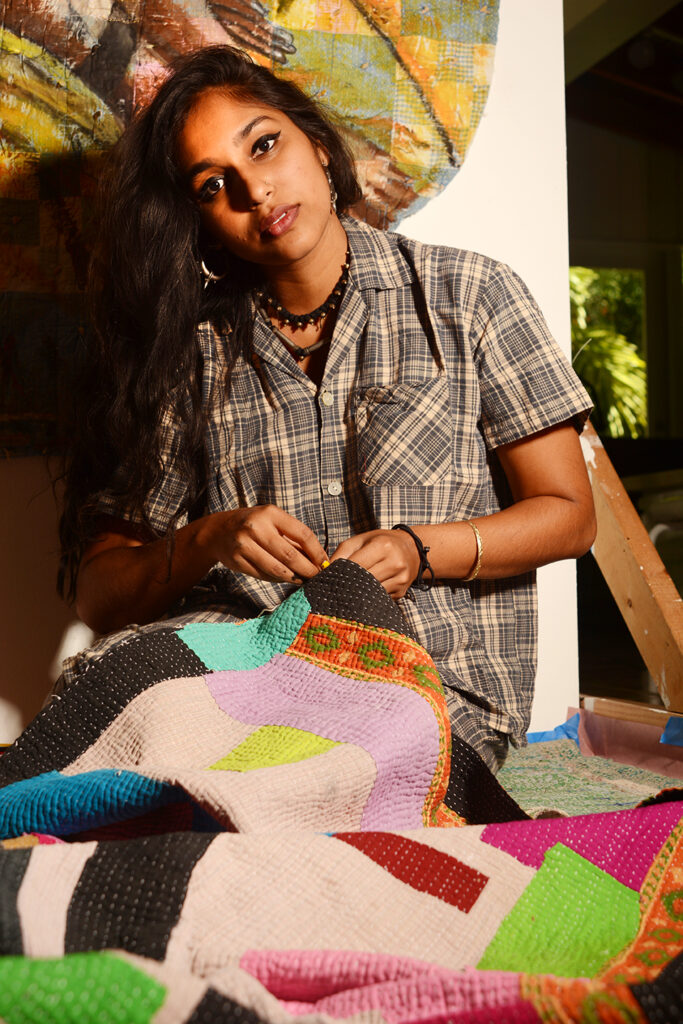
Karno Dasgupta: Could we start with your earliest memories of cloth?
Bhasha Chakrabarti: Fabric itself had a very significant impact on my life and I don’t mean that only in a positive or romanticised way, but in a way where I learned quickly that it was a tool of power, oppression, and assimilation. Two early memories stand out:
There’s the kantha (blanket) that I had as a baby. My great-aunt had made it for me from her old sari. I was very attached to it as an infant. That was my first encounter with a quilt, which is now such a prominent part of my work.
When speaking of cloth, a lot of memories that people want to focus on are warm and fuzzy ones but I don’t think that’s necessarily always the case. My mom used to wear saris all the time when I was a kid until I was in the second grade. Recently, I asked her, “What happened? Why did you stop?” My mom said, “Do you not remember what happened?”And then as she told me, I did remember although I had very actively erased this memory.
When I was in the second grade, my mom chaperoned a school field trip and she wore a sari. It was to a sugar plantation house turned museum in Hawa’ii. At the plantation house there was an image of a woman plantation worker, likely Filipina, in a wrapped garment. A classmate said, “Oh, that’s what your mom dresses like.” I went home, crying and told her, “All you do is ruin my life.” From that point on, she stopped wearing saris. I think about this deep irony, because I wear saris almost all the time now.
Dasgupta: How was it that you came to art and what enables you to approach social and political questions?
Chakrabarti: Initially, I did development studies, political science, and economics in my undergrad. I was actively thinking about the UN. But so much of that kind of work was very top down, and felt misaligned with my interests. So instead, after graduating from college, I moved to NYC and started working at an advertising agency, although I knew that wasn’t what I wanted to do either.
One of my best friends from college started working at the Studio Museum in Harlem and would always invite me to tag along to art openings. This was how I was introduced to the world of contemporary art. I was really lucky because that moment (2012-14) was when certain African-American artists were gaining visibility and a platform for their deeply political work. It was research-based work and it was theoretically rich work. To articulate research in a way that begins discussion and discourse felt a lot more equitable to me.
Then I saw an exhibition of Gee’s Bend Quilts at the Metropolitan Museum of Art. I had grown up with quilts, knowing how to quilt, and with textile. I was like, “OK, if a quilt can be an artwork, then I feel much more permission to become an artist.” And I thought back to my undergraduate honours thesis. It was a political science and economics thesis, but it was on the handloom industry in India. From very early on, this idea of cloth, materiality and aesthetics being political was something I was very interested in. I just hadn’t allowed myself to lean into it. So a month later, I quit my job. I was like, “I’m gonna become an artist.”
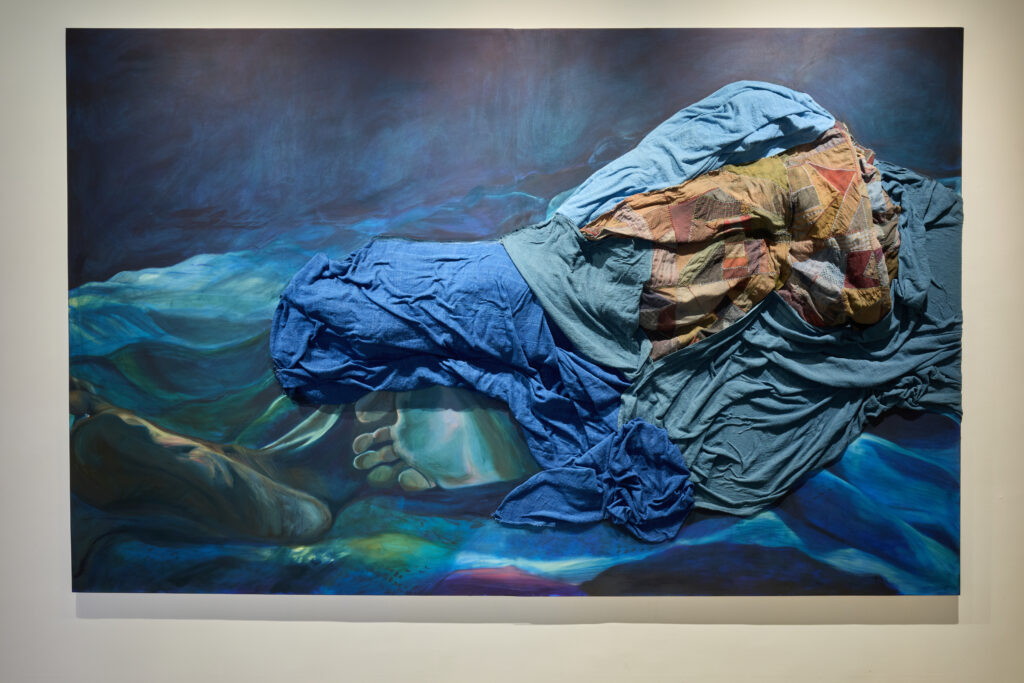
Dasgupta: Let’s talk about textiles in particular. Textile is ubiquitous in our lives, but what might we gain and lose in its uptake by the art world?
Chakrabarti: In the art world, textile has suddenly become the hottest commodity. The operative word is “commodity.” That’s the reason why it’s actually not doing the work that we were all hoping it would do. But then, you also have to ask: can you and do you even want to separate it from the market? It’s not possible for most of us.
Recently, I’ve been thinking a lot more about textiles that were not and have never been produced as commodities, but were produced for oneself, for a gift economy, or for use in the home. Specifically, about Gee’s Bend quilts made by African-American women who are descended from enslaved people. They were forced to learn quilting to make quilts for their masters. But then, they would go home and make quilts for themselves. There is an aesthetic and power to things that people, who are being used as labour, continue to make for themselves.
I’m comparing Gee’s Bend quilts to the quilting traditions of the Siddis, who were another historically enslaved peoples — the African diaspora in India. They have, for generations, made quilts for themselves using a vocabulary and aesthetic visual language that’s uncannily similar to Gee’s Bend quilts.
Ultimately, I’m always moving across mediums. I try to resist narratives of mastery. I think that the moment you start falling into those you start becoming a producer of items — responding to the marketplace — more than you’re creating something for yourself, your family, friends, or loved ones. I try to remember that cloth has always been produced as a commodity, but it’s also always been produced for oneself (as well). And a focus on the latter is the radical hope for textile arts, for me.
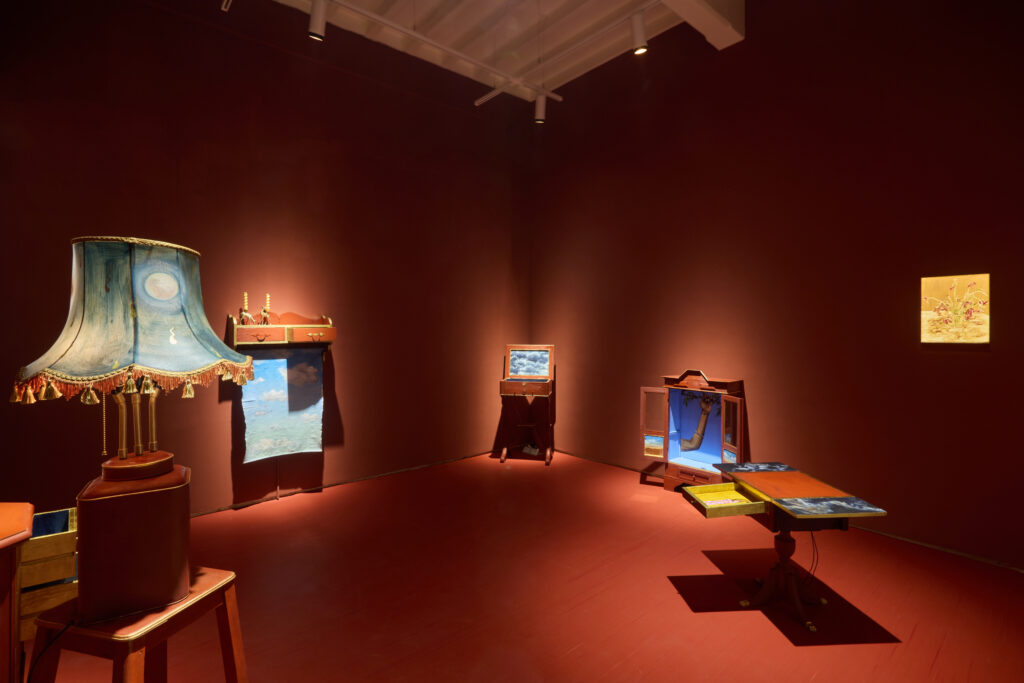
Dasgupta: Thinking more about your practice, there is an insistence on the form, a kind of awareness-raising about the material itself. Why?
Chakrabarti: Painters take all these steps to obscure the fabric-ness of the fabric they’re painting on, only to then paint fabric back onto it. Why doesn’t everyone remember that the canvas is cloth to begin with?
In my versions of drapery painting, like the Karvat series, the first two layers are what are there classically: the base canvas and the painted fabric. The third added layer, the intervention that I see myself making in the narrative, is physically collaging fabric onto the surface. Then one could say that here is a fourth element, which is that the fabric that I use in my practice consistently (unless I’ve woven it myself) is used clothing.
There’s already fabric in our lives. The fabric I’m adding can just be fabric that I have lying around. I take material, I make a quilt out of it (which is already an existing practice of mine), I lay that quilt onto a painting. To me, it’s about closing these hierarchies of mediums and genres, which I think — despite the popularity of textiles in contemporary art — remains.
Recently, the Portland Museum in Maine acquired one of my paintings. It’s an oil painting done on jute. Since it’s a painting of a carpet, I’ve decided that the painting sits on the floor, like a carpet does. This confused the museum. The curator told me that since the piece is a textile piece, it can only be shown for six months because textiles fade in light. I was like, “It’s not a textile. It’s an oil painting.” Oil paintings can stay out for five years.
There’s a conversation that started to happen, practically. People are starting to grapple with these categorisations in the art world, which I’m really interested in. Are we supposed to treat this like a painting or like a quilt or like a textile tapestry? They’re like, “It’s a tapestry.” Sure, but then I want your Picasso to also be a tapestry.
Dasgupta: Karvat’s Nephology series links painted cloth to the study of clouds. It’s an interesting connection.
Chakrabarti: It’s related to epistemological hierarchies in terms of thinking about the “conceptual” vs the visceral, the mind vs the body. There’s this idea of clouds being elevated physically and also this idea of (cloud watching as) a contemplative practice. Bringing that into conversation with fabric, which to me is a very clear stand-in for the body, and all things earthly. I wanted to bring those two closer together, even make them interchangeable. It was inspired by Ismat Chughtai’s Lihaaf, where you have this character contemplating the covers in a bed and how it transforms and changes constantly. It seemed to resemble the act of cloud watching.
The most divine, heavenly moments were the smallest works (in Karvat), whether it be the music boxes or the Nephology paintings. And the most mundane, domestic moments were the largest, most monumental paintings in the show. It was an intentional scale shift that I was attempting.
Dasgupta: That makes me think about how difficult it is to properly notice that which is ubiquitous. What might we learn from cloth’s many faces?
Chakrabarti: One aspect of my practice engages really directly with the nude female body, thinking about the “exposure” or “transparency” of that gesture as a sort of obscuring act. As an act of resistance rather than as an act of allowing access to the body, which is how it’s traditionally thought in art history and exploited. The push and pull between opacity and transparency is similar to what I find in cloth.
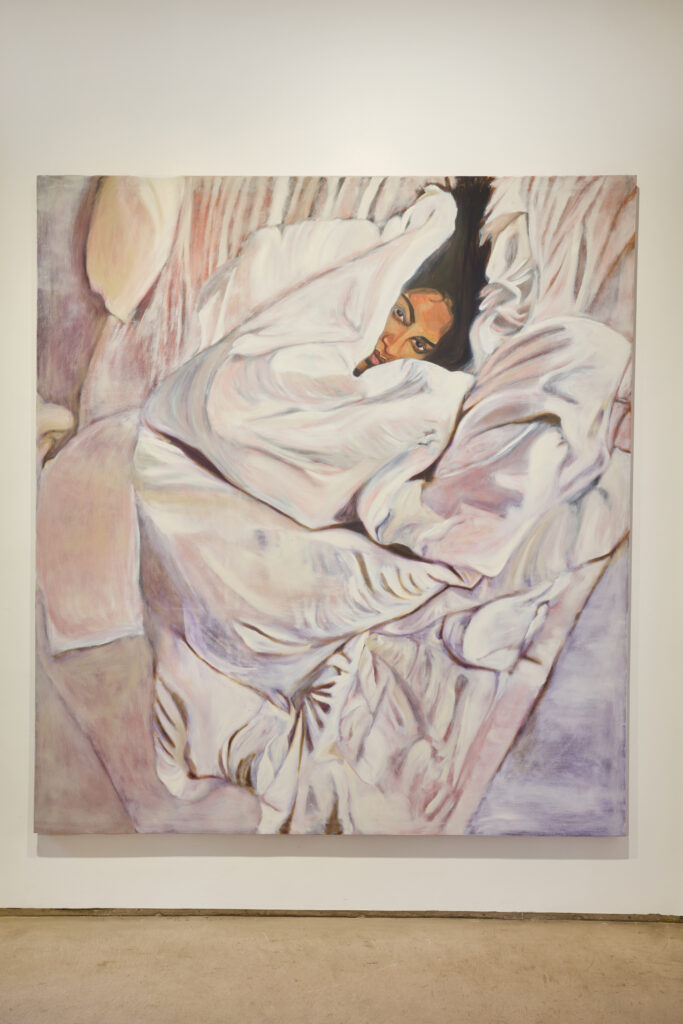
If you spend a lot of time with fabric, you can see the history of the world in it. The history of labour and exploitation. The ways in which a fabric can materially, physically wrap itself around your body and expose you — your identity, who you are. This harkens back to my mother in a sari becoming a really exposing gesture. On the other hand, it’s an obscuring gesture. It’s something that covers the body. It allows a place for hiding, a place for intimacy and for exploitation (under covers) to happen. That duality makes it really powerful for me.
People often talk about depth as the way in which we learn more about something. But what does it mean to read something for surface rather than to read it for depth? Sitting with cloth allows you to see the possibility of that.
I think painting myself nude feels like a drag performance. This feeling of putting on a costume. It’s like the stereotype of my body being performed back to you. Whereas the painting Soft Firmament (Dawn) is like a very vulnerable self-portrait. It’s a very exposing painting, and there’s an irony to that, that the painting in which I’m almost entirely covered, is the one where I feel the most exposed. But it’s not unexpected for someone like me, who’s working with cloth all the time.
Karno Dasgupta is a writer and researcher from Kathmandu. Born in Kolkata, they grew up first in Nepal, and later, Abu Dhabi. Karno writes about the poetics and mechanics of contemporary art.
